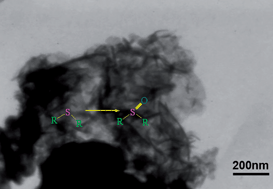Nanolayered manganese–calcium oxide as an efficient catalyst toward organic sulfide oxidation†
Abstract
We for the first time report that nanolayered Mn–Ca oxide in the presence of H2O2 is an efficient catalyst toward sulfide oxidation to sulfoxide. We characterized the catalyst by DLS, UV-Vis, diffuse reflectance infrared Fourier transform spectroscopy, SEM, TEM and HRTEM. We also considered different parameters of the sulfide-oxidation reaction.


 Please wait while we load your content...
Please wait while we load your content...